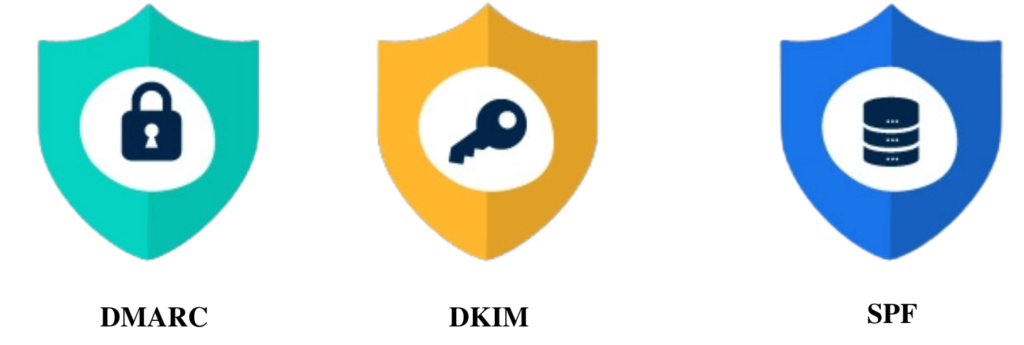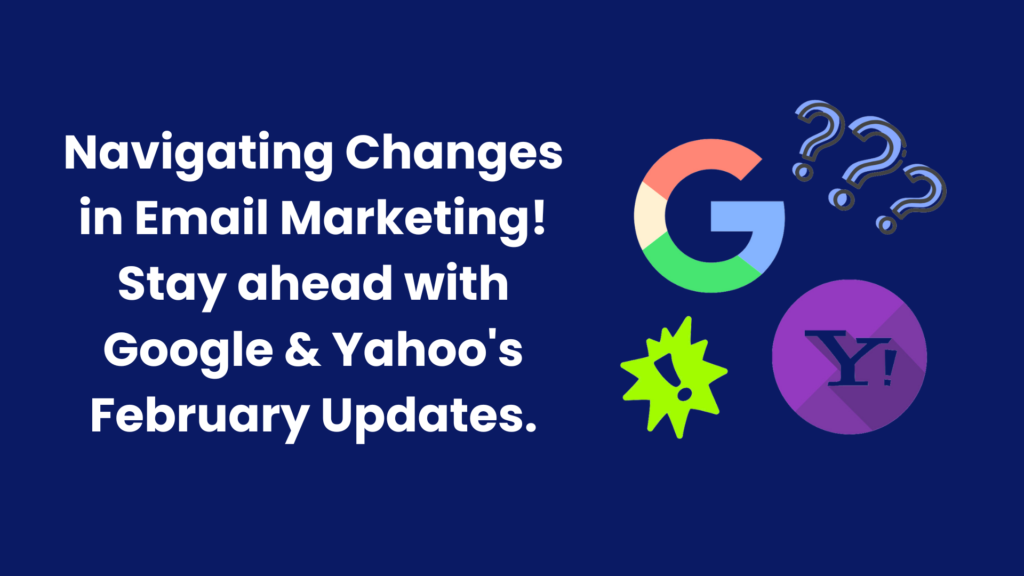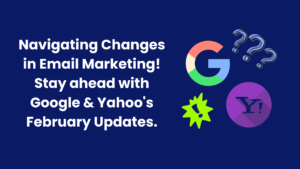In the world of email marketing, it’s important to keep up with the latest updates. Google and Yahoo, big email providers, are making some important changes in February 2024. This article will help you understand these changes, what they mean, and how you can adapt to them for better email marketing.

New Email Rules
To make sure your emails reach people’s inboxes, you need to follow some rules set by Gmail and Yahoo. If you send a lot of emails (more than 5,000 a day), you have to be extra careful. Let’s look at these changes, focusing on the need for confirming who sends the email, making it easy for people to unsubscribe, and managing complaints about spam.
Good News and Bad News
At present, these regulations solely impact individuals sending over 5,000 emails to personal accounts daily, yet there’s a potential extension to encompass business email accounts in the future. It’s advisable to stay prepared for any forthcoming changes.

Understanding Email Authentication Requirements
To ensure the authenticity and legitimacy of email communication, Google and Yahoo are expecting stringent email authentication standards. The three key protocols at the forefront of these changes are SPF (Sender Policy Framework), DKIM (DomainKeys Identified Mail), and DMARC (Domain-based Message Authentication, Reporting, and Conformance).

SPF (Sender Policy Framework): This protocol validates that an email message comes from an authorized and legitimate source. It prevents unauthorized sources from sending emails on behalf of your domain.
DKIM (DomainKeys Identified Mail): DKIM adds a digital signature to emails, allowing the receiver to verify that the message comes from the claimed sender and hasn’t been altered in transit.
DMARC (Domain-based Message Authentication, Reporting, and Conformance): DMARC builds on SPF and DKIM, providing a framework for email authentication and specifying how email providers should handle unauthenticated messages.
Implementing these authentication protocols is essential for email senders to maintain a positive sender reputation, reduce the risk of phishing, and contribute to overall email deliverability.
Simplified One-Click Unsubscribe Process
In response to user-centric considerations, Google and Yahoo are emphasizing a user-friendly approach to unsubscribing. The one-click unsubscribe process streamlines the opt-out mechanism, empowering email recipients to manage their subscription preferences effortlessly. This user-friendly feature aligns with industry best practices, and regulatory standards, and fosters improved transparency and trust between senders and recipients. By making unsubscribing easy, email providers aim to enhance the overall email experience and respect user choices.

Maintaining a .3% Spam Complaint Rate
Senders must prioritize keeping their spam complaint rates below 0.3%. This metric, now a pivotal requirement for high-volume senders, can be efficiently monitored through Google Postmaster Tools. This tool provides real-time tracking of spam complaint rates, enabling senders to address potential issues promptly.
Maintaining a low spam complaint rate not only aligns with industry standards but also contributes to a positive sender reputation. This, in turn, increases the likelihood of emails reaching recipients’ inboxes rather than being filtered into spam folders. Integrating Google Postmaster Tools into your email management strategy allows for seamless tracking and compliance.

Conclusion
Adapting to the evolving landscape of email marketing, especially considering the forthcoming changes from major providers like Google and Yahoo, requires a proactive approach. Prioritizing email authentication through SPF, DKIM, and DMARC, implementing a user-friendly one-click unsubscribe process, and managing spam complaint rates below 0.3% are essential steps for maintaining a strong email marketing strategy. For guidance and assistance through these changes, our support team is ready to help you navigate the evolving email landscape successfully.









